Garbage and Recycling Survey - Chance to Win a $25 Prepaid Debit Gift Card
Please take a few minutes (approximately 3) to complete our Garbage and Recycling Survey. Your feedback is greatly appreciated as it will help guide future solid waste policy and program decisions.
You could also win a $25 prepaid debit gift card! Please note that survey takers must be at least 18 years old and live in Olmsted County to be eligible for the gift card drawing.
Ash Utilization Pilot Project Approved
After 30-plus years of discussing, planning, researching, and pursuing, Olmsted County hit a major milestone in its efforts to beneficially use the waste combustor ash from the Olmsted Waste-to-Energy Facility (OWEF).
On October 29th, the county received approval from the Minnesota Pollution Control Agency (MPCA)—in the form of a "case-specific beneficial use determination (CSBUD)"—to build a test strip of road at the Kalmar Landfill using waste combustor ash as a supplement to a class 5 road gravel.
Under the CSBUD, the Environmental Resources Department estimates replacing up to 20% of the typical class 5 gravel used as a base course under paved roadways. This project will use approximately 790 tons per lane-mile, or 1,580 tons for every one mile of a two-lane road.
Each year the OWEF generates approximately 30,000 tons of ash. Each mile of two-lane highway constructed with OWEF ash would reduce the amount landfilled by about 5%.
The goal is to develop a repeatable set of production and construction specifications that could be used in future Olmsted County road construction projects.
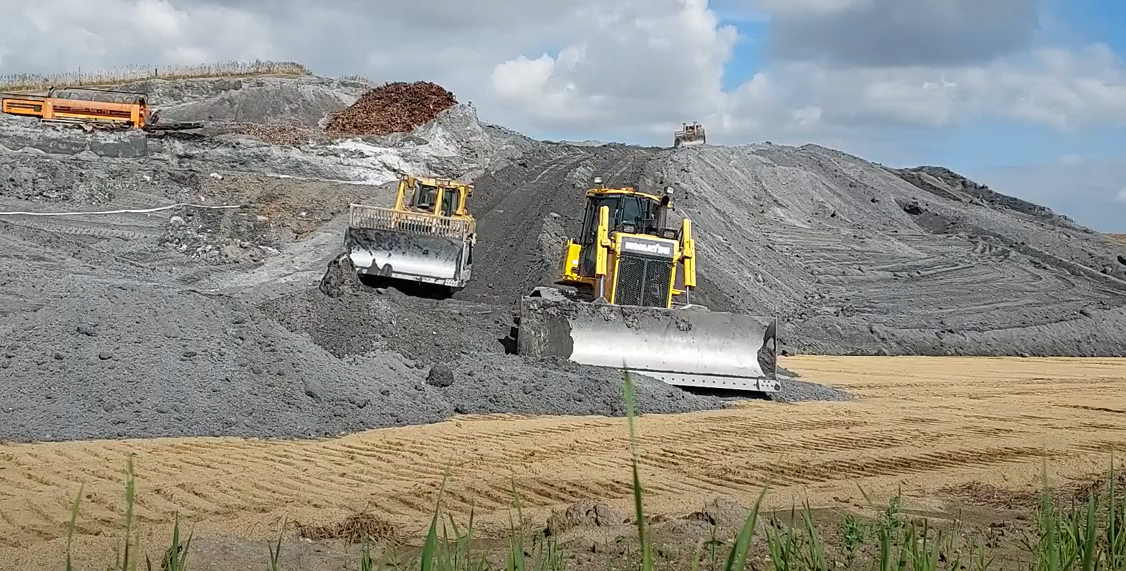 Bulldozers move ash into newly formed Ash Cell 6 at the Kalmar Landfill; photo credit: Carl Struckmann
America Recycles Day - 2021
Recycling is an easy way to conserve resources, prevent pollution, and reduce the amount of waste we send to a landfill. Approximately 41% of the waste generated in Olmsted County is recycled. By comparison, this rate is slightly higher than the rest of non-metro MN counties (39%) and well above the national average of 32%.
Unfortunately, contamination continues to be a problem that can degrade and even ruin entire loads of recyclable materials. America Recycles Day—November 15th—provided an opportunity for Olmsted County residents to know what to throw!
This year, the Environmental Resources Department worked with local public and private elementary schools to distribute recycling activity packets and approximately 1,900 recycling cart guides to 3rd-grade sections across 18 elementary schools.
Additionally, staff provided in-person presentations for groups that completed a speaker request form and created recycling-themed Facebook posts in the days leading up to November 15th.
Download a copy of the Curbside Recycling Cart Guide on our website.
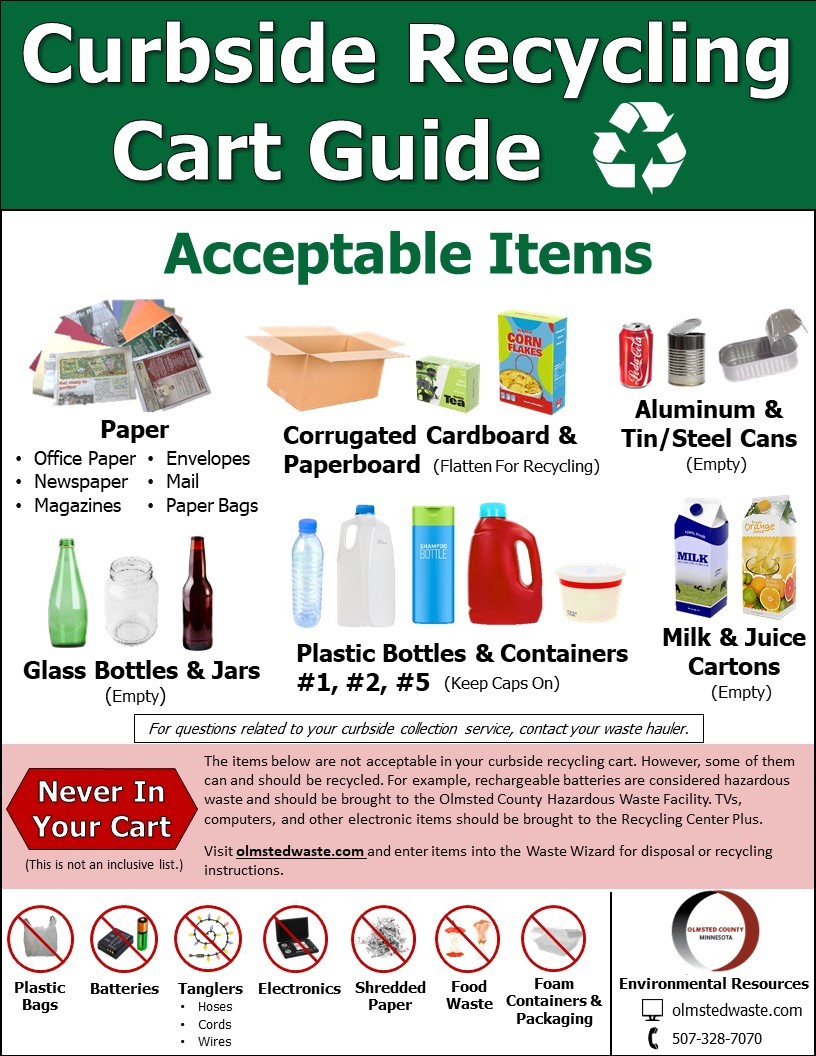
Compost Site Time-Lapse
Fall is a very busy time at the Olmsted County Compost Site. During the fall, the Compost Site can receive upwards of 45,000 visits! This year, we set up a trail cam to capture a small portion of the site's activity.
Check out our time-lapse video of site visits from Saturday October 23rd and Sunday October 24th.

Minnesota Representatives Visit Olmsted County
On Wednesday, November 10th, representatives from the Minnesota House Capital Investment Committee visited the Olmsted Waste-to-Energy Facility to learn about Olmsted County's plans to build a materials recovery facility (MRF).
Olmsted County is seeking $12.5 million in MN State bonding to build a materials recovery facility (MRF) that would provide a local destination for recyclables. Currently, recyclables are sent to sorting facilities in the Twin Cities.
Olmsted County appreciated this opportunity for constructive dialogue. Visit our website to learn more about this proposed project, and how it could benefit our community.
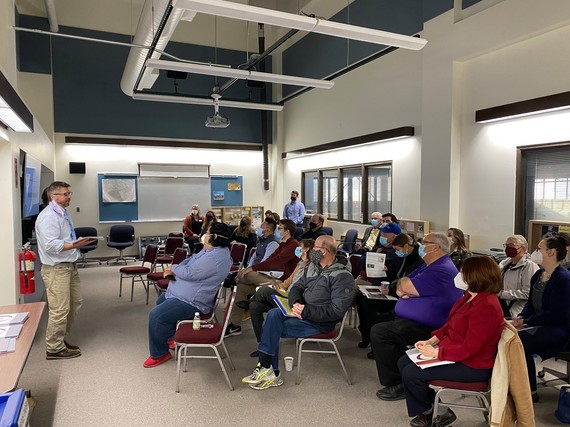 Minnesota House of Representatives Capital Investment Committee learns about the proposed MRF; photo credit: Jennifer Berquam
Mayowood House Deconstruction Diverts Materials from Landfill
Over July and August, staff members from Environmental Resources (ER) worked with Facility, Buildings, and Operations (FBO) staff on a deconstruction project of a county‐owned residential facility on Mayowood Road in Rochester. The project's goals were to minimize the amount of demolition material deposited at the Kalmar Landfill, provide a second life for materials to be reused or recycled, and demonstrate sustainable waste management practices. The pilot project diverted approximately 15,200 pounds (7.6 tons) of materials from disposal at the landfill.
Results of this project will be carried forward to the remodeling project of the Justice Center space (Government Center) this coming January. ER staff will be working with FBO staff and Kraus‐Anderson on deconstruction activities with the main goals of saving landfill space, material reuse, and recycling.
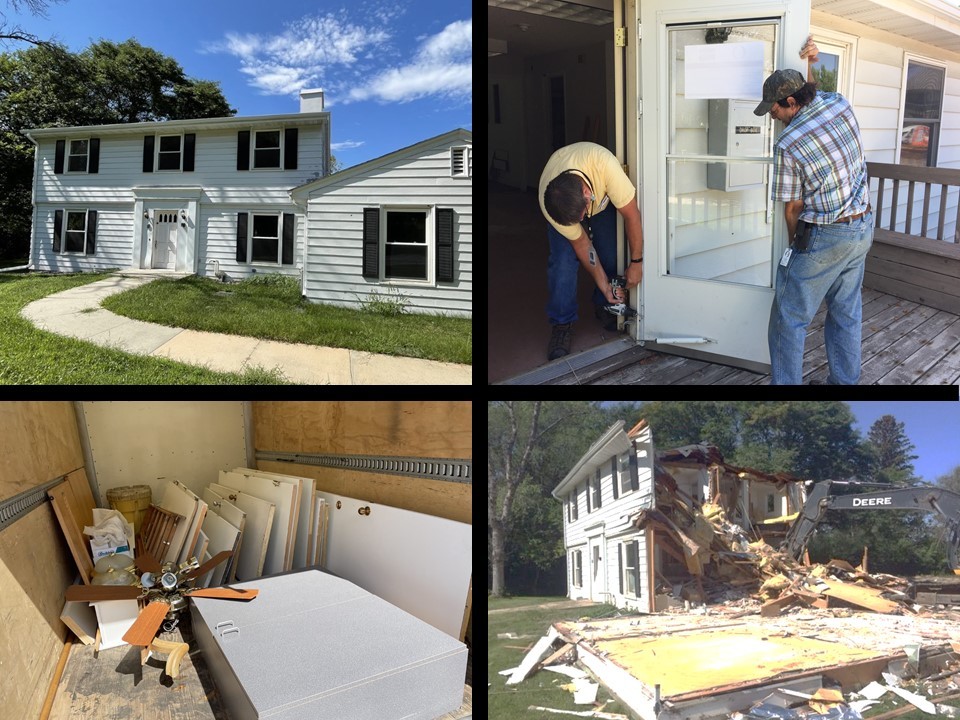 Photos of the deconstruction process; photo credit: Olmsted County Facility, Buildings, and Operations staff
Waste Less Food this Holiday Season
The United States Department of Agriculture estimates that 30% - 40% of our nation's food supply is wasted each year. This amounts to billions of dollars in wasted food. Locally, Olmsted County's 2019 Waste Composition Study found that food waste comprised 21% of our trash by weight!
When you begin to think about the land, water, energy, and labor resources required to get that food from some distant field to your refrigerator, it doesn't seem so harmless to let that food go to waste.
As we approach the holiday season, see if you can cut down on wasted food and your grocery bill with these tips:
U.S. Food & Drug Administration
- Preplan and write out your shopping list before going to the grocery store.
- Be careful when buying in bulk if the food has a limited shelf life.
- If available, purchase "ugly" fruits and vegetables—sometimes listed at a lower price.
- See more...
Environmental Protection Agency - Reducing Wasted Food at Home
- Keep a running list of meals and their ingredients that your household already enjoys.
- Look in your refrigerator and cupboards first to avoid buying food you already have.
- Many fruits give off natural gasses as they ripen, making other nearby produce spoil faster. Store bananas, apples, and tomatoes by themselves, and store fruits and vegetables in different bins.
- Food Loss and Waste Factsheet
- See more...
FoodSafety.gov
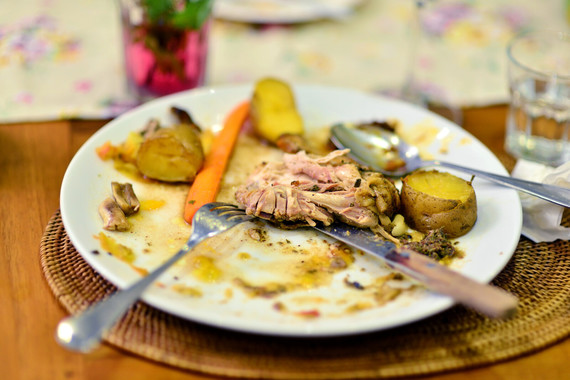
Disposal Discussion: Plastic Pumps
Remove the plastic pump before you recycle empty soap/shampoo/lotion bottles. These pumps should go in the garbage as their shape and internal spring make them problematic for recyclers.
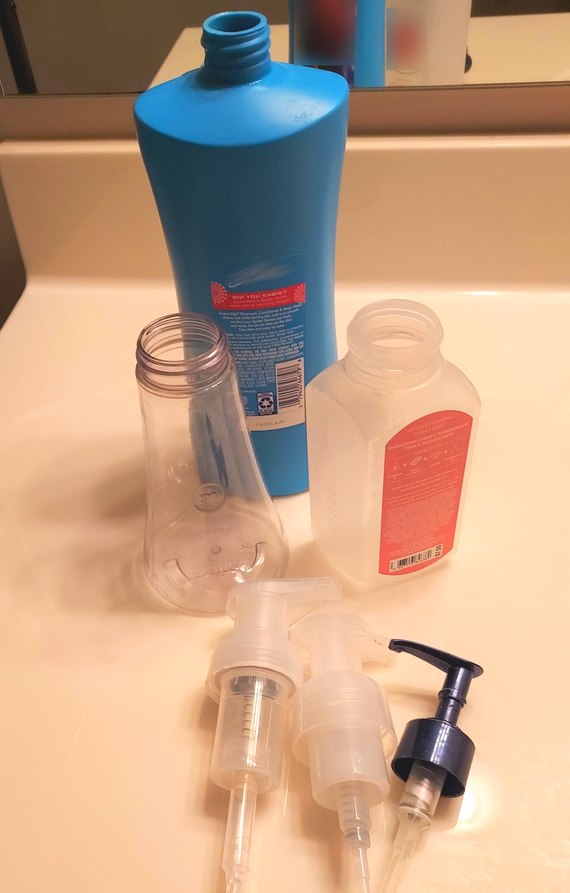 Plastic bottles and pumps; photo credit: Anthony Wittmer
|